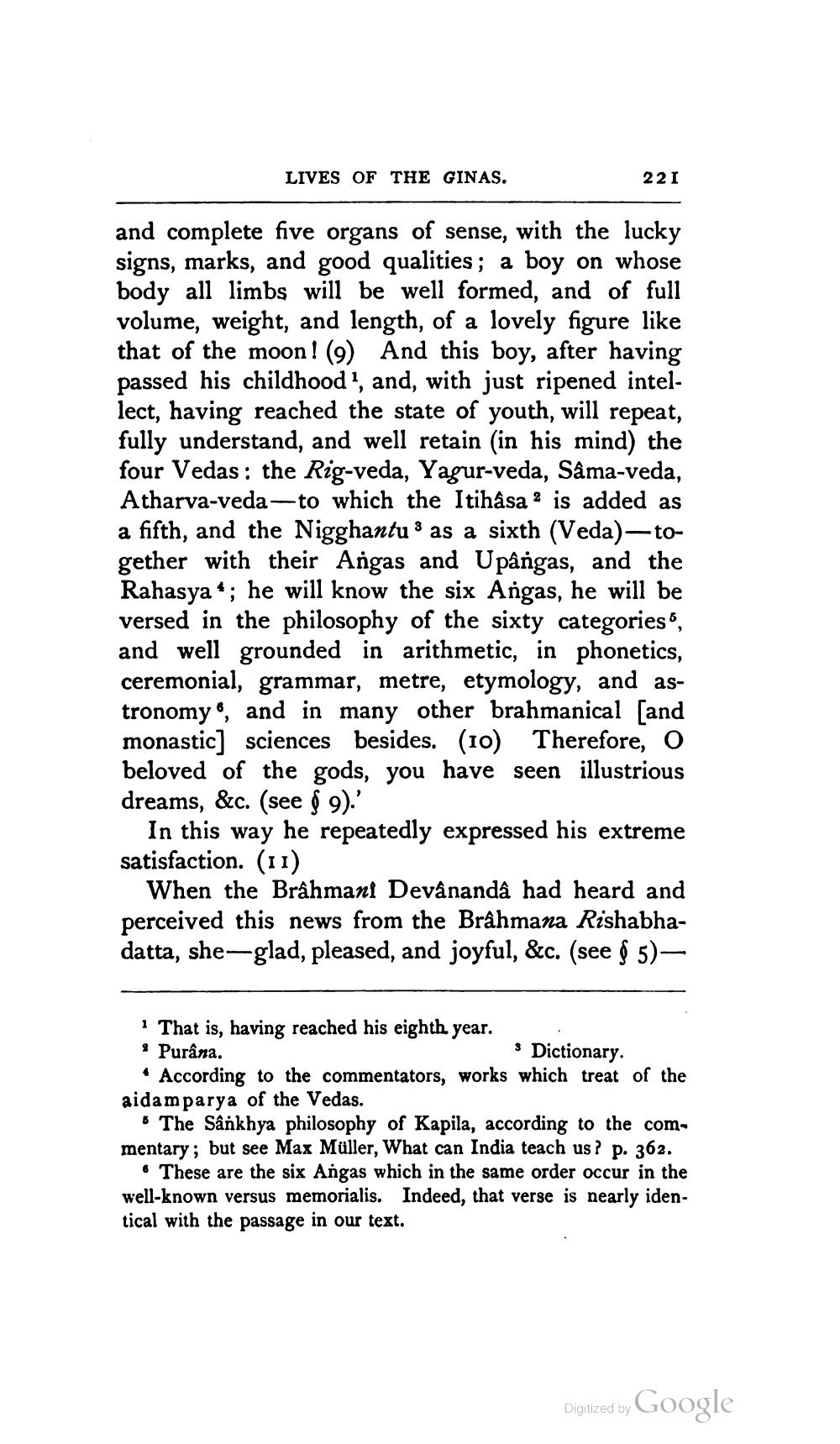________________
LIVES OF THE GINAS.
221
and complete five organs of sense, with the lucky signs, marks, and good qualities; a boy on whose body all limbs will be well formed, and of full volume, weight, and length, of a lovely figure like that of the moon! (9) And this boy, after having passed his childhood", and, with just ripened intellect, having reached the state of youth, will repeat, fully understand, and well retain (in his mind) the four Vedas: the Rig-veda, Yagur-veda, Sâma-veda, Atharva-veda—to which the Itihasa 2 is added as a fifth, and the Nigghantu : as a sixth (Veda)—together with their Angas and Upârgas, and the Rahasya *; he will know the six Angas, he will be versed in the philosophy of the sixty categories, and well grounded in arithmetic, in phonetics, ceremonial, grammar, metre, etymology, and astronomy, and in many other brahmanical [and monastic] sciences besides. (10) Therefore, O beloved of the gods, you have seen illustrious dreams, &c. (see § 9).'
In this way he repeatedly expressed his extreme satisfaction. (11)
When the Brahmani Devânanda had heard and perceived this news from the Brahmana Rishabhadatta, she-glad, pleased, and joyful, &c. (see § 5)
* That is, having reached his eighth year. Purâna.
3 Dictionary. • According to the commentators, works which treat of the aidam parya of the Vedas.
6 The Sankhya philosophy of Kapila, according to the commentary; but see Max Müller, What can India teach us? p. 362.
. These are the six Angas which in the same order occur in the well-known versus memorialis. Indeed, that verse is nearly identical with the passage in our text.
Digitized by Google




